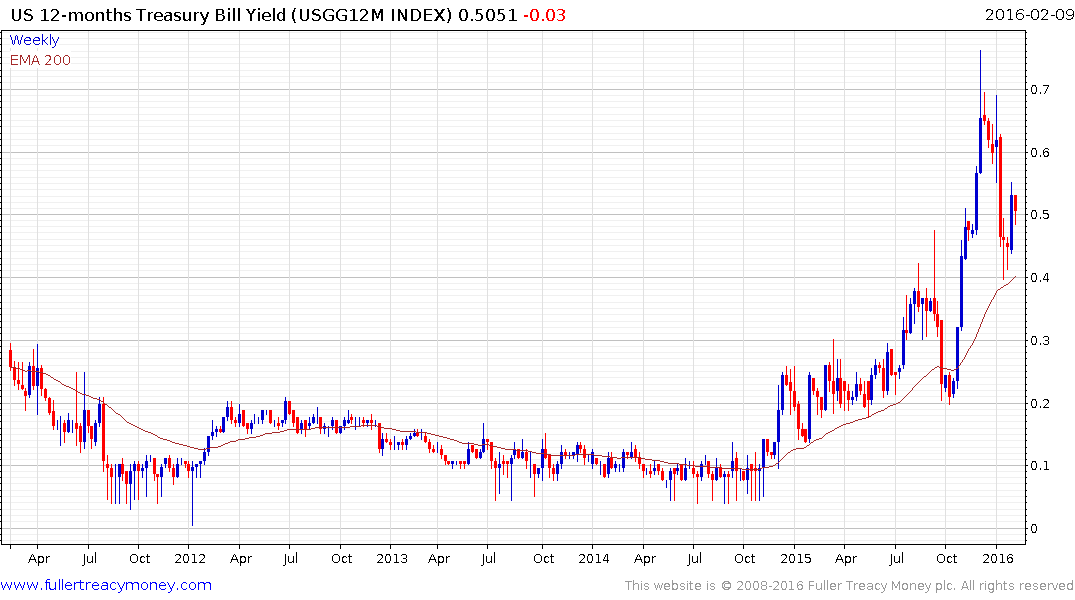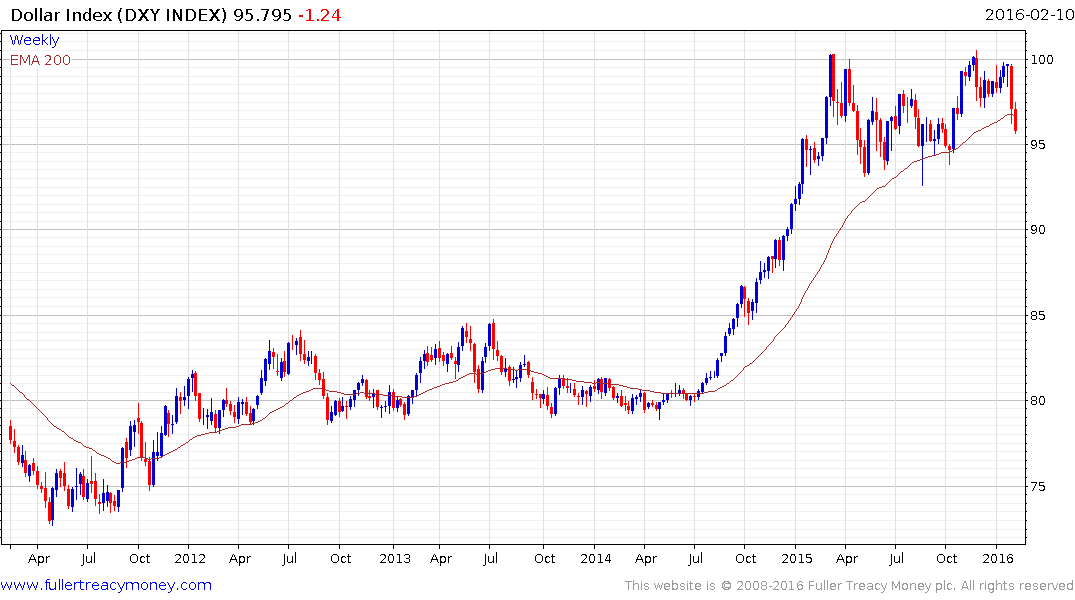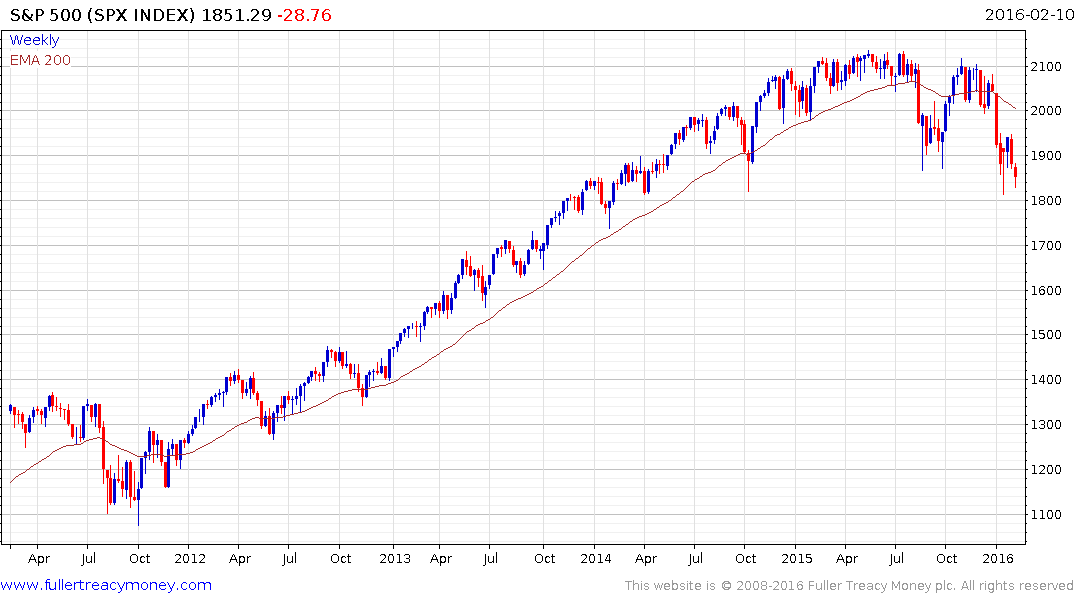Yellen Signals Rate Path Hinges on Whether Turmoil Persists
This article by Christopher Condon, Jana Randow and Craig Torres for Bloomberg may be of interest to subscribers. Here is a section:
“Financial conditions in the United States have recently become less supportive of growth,” Yellen said in testimony prepared for delivery Wednesday before the House Financial Services Committee in Washington. “These developments, if they prove persistent, could weigh on the outlook for economic activity and the labor market.”
Yellen, 69, kicked off two scheduled days of testimony on Capitol Hill by also telling lawmakers that uncertainty over China’s economic prospects and exchange-rate policy had “exacerbated concerns about the outlook for global growth” and contributed to the latest drops in oil and other commodities. A deeper commodities bust could trigger stresses around the world that threaten demand for U.S. exports, she said.
Yellen kept the door open for a rate increase in March, though she didn’t explicitly refer to any tightening timeline or the Fed’s next meeting.
“She is holding to her guns,” said Ward McCarthy, chief financial economist at Jefferies LLC in New York. “The financial market turmoil is not going to make them reverse course. It could have an effect on the pace at which they normalize rates, but they are still committed to normalizing rates.”
In the financial sector many are focusing on stress in the stock market and plunging government bond yields. Janet Yellen’s speech today confirms she is also looking at these things but has to have a wider perspective. The reality is that the US economy is on a much better footing than it was six years ago and that the zero bound for interest rates is no longer appropriate. That’s cold comfort for traders accustomed to access to free money and that change to the status quo helps to explain much of the deleveraging that has gone on since August.
The Fed is looking at wage growth which broke out late last year. This news item from the Wall Street Journal’s blog yesterday also helps to confirm the jobs market continues to recover. Here is a section:
It’s less clear if December will remain a peak or if that momentum can continue into 2016. As already noted, the pace of net job creation slowed in January and many big companies are pulling back on spending and, in some cases, announcing layoffs amid weak demand and broader uncertainties about the U.S. economy.
But the Labor Department measures show a market that is getting tighter, spurring higher pay and pushing employers to hold onto existing employees.
“Despite the turmoil in financial markets and increasing talk of recession, the labor market continues to improve and is moving toward full employment,” said Gus Faucher, senior economist with PNC Financial Services. “Job openings and hiring are up, workers are leaving their jobs to find new ones, and layoffs are very low.”
After all people do not choose to leave their jobs unless they have a better opportunity lined up. The impending hike to minimum wages in a number of the USA’s largest cities will also put upward pressure on wage growth. So far job losses in the energy sector have not put pressure on these figures how that plays out over the next six months will likely have a strong influence on Fed decisions.


The Fed is the only major central bank raising rates and this has put upward pressure on the Dollar. The bond market has been very clear that it does not expect four rate hikes this year and the 12-month yields suggest between one and two. That has taken some of the impetus out of the Dollar’s rally and suggests a process of consolidation is likely to persist a while longer. Medium-term, the widening interest rate differential that acted as a headwind for the Dollar over the last decade is now likely to be a tailwind so anything more than a consolidation is unlikely at this stage.
It has been our view here at FullerTreacyMoney that the stock market rally was liquidity fuelled particularly from 2012 onwards. Therefore it is reasonable to assume that it needs to get over the hump of normalising monetary policy before the evolving secular bull market can really take off. The S&P 500 is currently trading in the region of the September 2014 low and steadied today following the above news item.
.png)

.png)
A short-term oversold condition is evident so there is scope for a further rebound. Medium-term, this is a bearish chart pattern with an overhead top formation evident. Long-term this is looks like the first big consolidation following a major breakout from a 12-year range.
Back to top


